Are you tired of endless dumbbell curls and want to transform your pull-up bar into a bicep-building machine?
Let’s know HOW.
The pull-up bar is a versatile tool that lets you hit your biceps from various angles.
One of the best things about pull-up bar exercises is that they work synergistically with both your biceps and back muscles.
Plus, the pull-up bar lets you get creative with your bicep workout routine, from beginner-friendly chin-ups to more challenging variations.
In this blog post, I’ll share seven of my favorite pull-up bar bicep exercises.
Let’s get started.
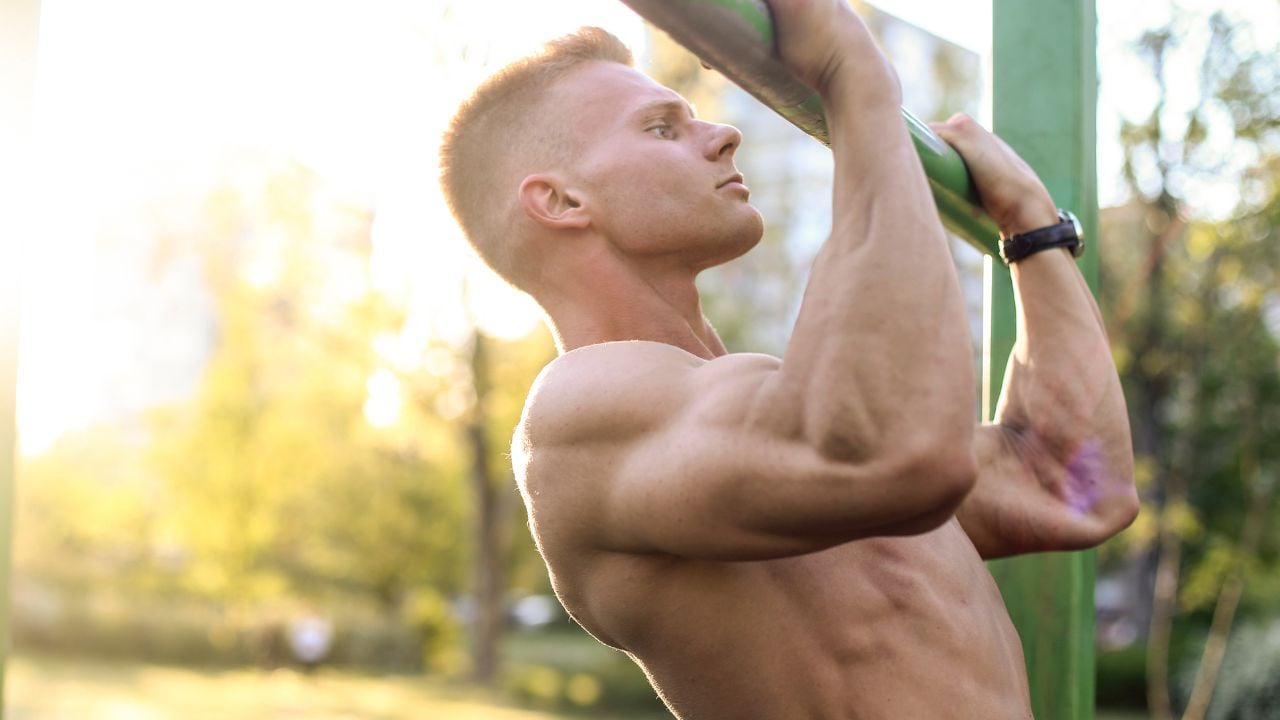
- 7 Pull-Up Exercises For Bicep
- 1. Chin Up
- 2. Hammer (Neutral) Grip Pull-Ups
- 3. Commando Pull-Ups
- 4. Close-Grip Pull-Ups
- 5. Isometric Holds Chin-Ups
- 6. Archer Pull Up
- 7. Towel Pull-Ups
- Advanced Pull-Up Techniques For Bicep Growth
- 1. Slow Negatives
- 2. Static Holds
- 3. Weighted Chin-Ups
- Pull-Up Bar Bicep Workout Routine
- Beginner Bicep Workout
- Intermediate Bicep Workout
- Takeaways
7 Pull-Up Exercises For Bicep
1. Chin Up
Chin-ups and pull-ups are often used interchangeably. However, they do have some differences.
Both exercises target the upper body, specifically the back muscles, such as the lats, trapezius, rhomboids, shoulders, and arms.
A chin-up is an exercise in which the palms face toward the body while gripping the bar (underhand or supinated grip). This grip targets the biceps more than the back and shoulders.
Studies have shown that The biceps brachii and pec major were more active during the chin-up than the pull-up, while the back and lower traps were more active during the pull-up.
I enjoy this exercise because I feel that my bicep is completely trained after doing it.
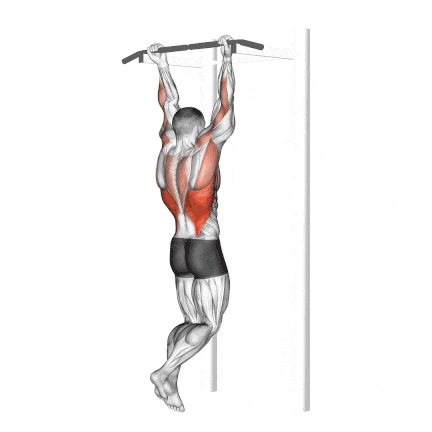
How To Do It
- Grip the pull-up bar with your palms facing toward you and use a narrow grip.
- Hang from the bar with your arms fully extended and shoulders pulled down and back.
- Engage your core and keep your body straight from your head to your heels.
- Pull your body up towards the bar by flexing your elbows and bringing your chest towards the bar.
- Keep your elbows close to your body as you pull yourself up.
- Once your chin is above the bar, hold for a moment and lower yourself slowly.
2. Hammer (Neutral) Grip Pull-Ups
In neutral-grip pull-ups, the hands are positioned with a parallel grip (palms facing each other) on the bar or a parallel bar.
This variation slightly shifts the focus away from the back and places greater emphasis on your biceps, brachialis (elbow flexor), and forearm muscles.
The neutral grip may be more comfortable for those with wrist or shoulder sensitivities than a traditional overhand pull-up.
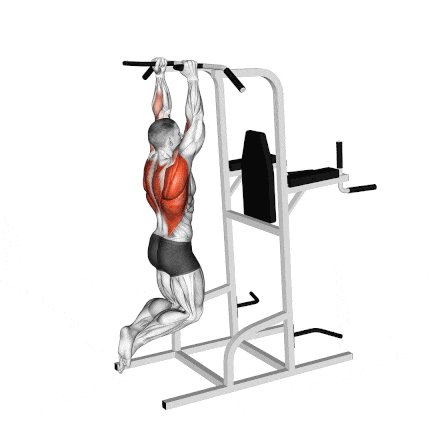
How To Do It
- Grab the handles with a neutral grip (palms facing each other).
- Start from a dead hang position with your body weight relaxed.
- Squeeze your shoulder blades down and back.
- Pull yourself upward until your chin is above the bars.
- Lower yourself back down to the starting position in a controlled manner.
3. Commando Pull-Ups
If you’re comfortable with standard chin-up variations, you should definitely try the Commando pull-up.
It’s a little trickier when you have your hands close together and switch which side of your head goes over the bar.
This really works your bicep and core and helps you get those wide lats. Add it to your bicep workout routine and see a big difference in your arm size.
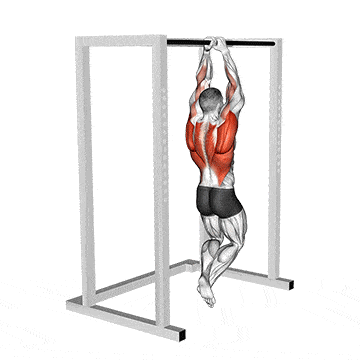
How To Do It
- Grip the bar with an overhand grip, placing one hand slightly in front of the other.
- Your hands should be close together.
- Hang from the bar with your arms fully extended.
- Pull yourself up, leading with one shoulder and bringing your head to one side of the bar.
- Slowly lower yourself back to the starting position with a full arm extension.
- For the next rep, pull with the opposite shoulder, clearing your head on the other side of the bar.
4. Close-Grip Pull-Ups
When performing Close grip pull-ups, the hands are placed closer than shoulder-width apart on the bar.
This grip variation increases the activation of the biceps and forearms and can help improve grip strength.
It’s important to use proper form and not to grip too close to avoid unnecessary stress on the wrist.
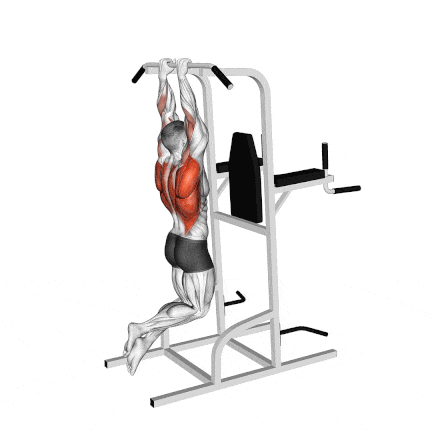
How To Do It
- Grab the pull-up bar with a narrower grip. Your hands should be around 6–8 inches apart.
- Hang from the bar with arms fully extended and your body straight.
- Pull yourself up, bringing your chest towards the bar.
- When you do a pull-up, raise your chin above the bar.
- Lower yourself all the way down until your arms are fully extended.
5. Isometric Holds Chin-Ups
During Isometric holds chin up, you have to hold a muscle in a contracted position for a period of time.
While both pull-ups and chin-ups work for isometrics, I prefer chin-ups to train biceps effectively.
Example: Perform an isometric hold at the top of a chin-up by pulling yourself until your chin is above the bar. Hold that position steadily for 5–10 seconds.
Start with 5-10 second holds, gradually working towards longer holds (up to a minute or more) or a maximum isometric pull.
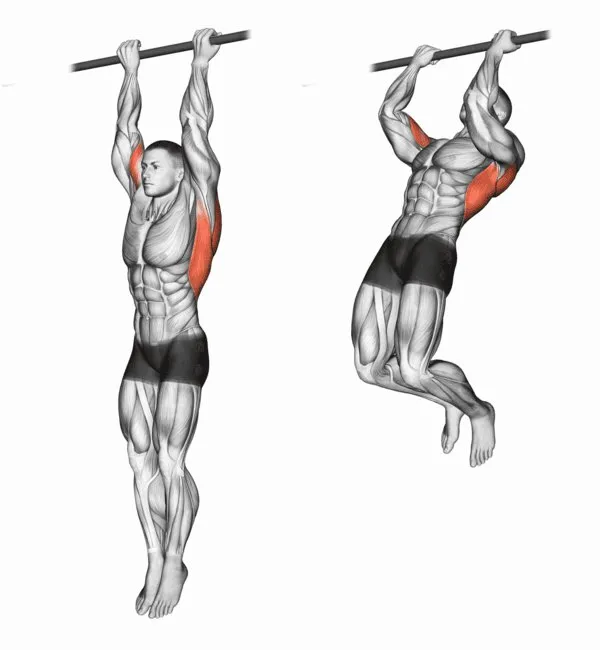
How To Do It
- Grab a pull-up bar with an underhand grip (palms towards you). Hands shoulder-width apart or slightly closer.
- Do a chin-up exercise and lift your chin above the bars.
- Choose your hold point. Popular options include:
- Top: Chin clearly above the bar.
- Mid-point: Elbows at a 90-degree angle
- Bottom: A few inches below the bar, still slightly contracted.
- Hold the chosen position for as long as possible, maintaining perfect form.
- Lower yourself in a controlled manner, rest briefly, and then repeat the hold at the same or a different position.
6. Archer Pull Up
Think of an archer pull-up as almost a self-assisted one-arm pull-up. It’s a great way to dramatically increase the intensity of a standard pull-up without adding weight.
This exercise intensely develops strength in one arm at a time, targeting the lats, biceps, forearms, and shoulders. It helps correct strength imbalances.
Note: Before attempting the advanced variations, you must master the standard pull-ups.
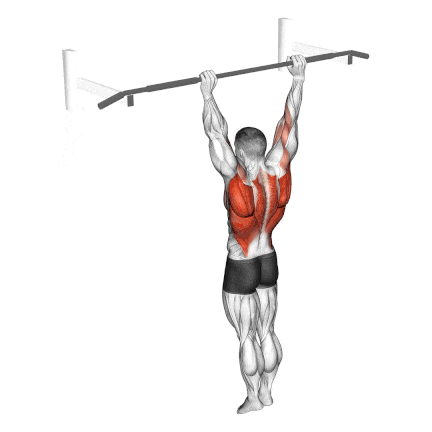
How To Do It
- Grab the pull-up bar with an overhand grip.
- Position one hand slightly wider than shoulder-width and the other hand closer to your body.
- Pull yourself upwards with the wider grip arm.
- As you pull, slightly twist and shift your weight towards the bent arm.
- Aim to get your chin above the bar on the side of the bent arm.
- Your fully extended arm may open slightly and roll over the bar. Imagine yourself drawing a bow and arrow with your body as the bow.
- Slowly lower yourself back down, maintaining the archer position as long as possible.
- After completing reps on one side, switch arm positions and repeat the movement on the other side.
7. Towel Pull-Ups
The towel makes the exercise harder because it can be harder to grip and hold on to than a traditional pull-up bar.
By gripping towels instead of the bar, you blast your forearms, bicep core, and back muscles (specifically the latissimus dorsi).
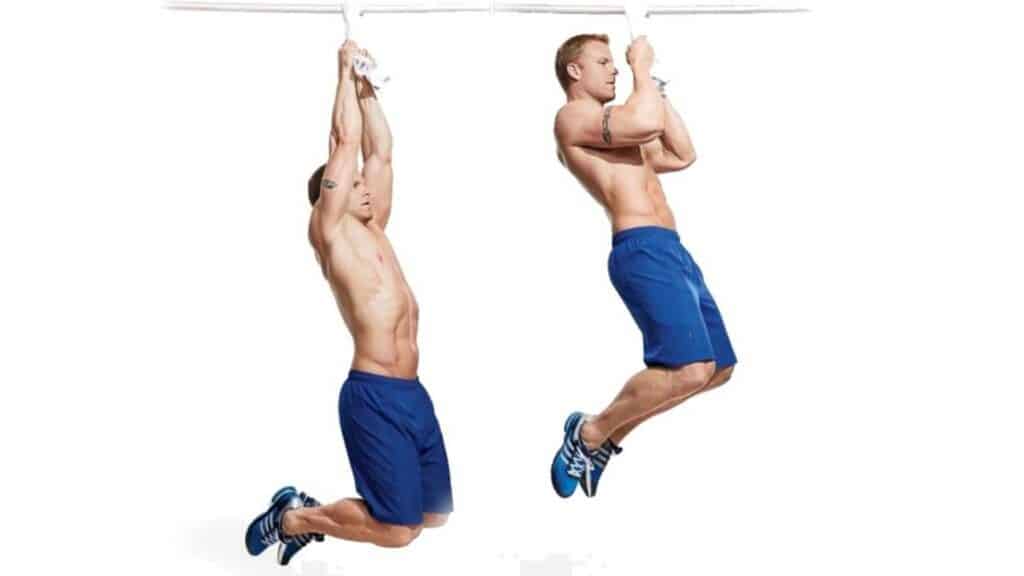
How To Do It
- Put a large towel (or two smaller ones) over the pull-up bar.
- Grip the ends securely with an overhand grip. If you can’t reach it, use a box or bench for assistance.
- Rotate your shoulders outward to engage your lats (back muscles).
- Start the pull by squeezing your shoulder blades down.
- Continue pulling, squeezing your upper back and lats until your chest reaches hand level.
- Pause briefly at the top.
- Slowly straighten your arms and lower yourself back to the starting position.
Advanced Pull-Up Techniques For Bicep Growth
The pull-up: a test of strength, a builder of backs, and a reminder of how tough bodyweight training can be. But once you know the basics, how do you keep getting better and keep improving? It’s time for some advanced pull-up techniques.
1. Slow Negatives
We all know the pull-up. You pull yourself up, then…well, you come down. But the descent holds a hidden secret – muscle breakdown magic.
Here’s why slow negatives are your new best friend:
- The pull itself is important, but the lowering phase (negative) significantly strains your muscles.
- By slowing down the descent to 3–5 seconds (or even longer!), you force your muscles to work harder for a sustained period. This extended time under tension leads to greater muscle breakdown, a key growth stimulus.
2. Static Holds
Think of static holds as the ultimate flex for your biceps. By holding that peak position, you’re putting your biceps under relentless isometric stress.
This challenges them in a whole new way, forcing them to adapt and grow stronger.
3. Weighted Chin-Ups
Once you’ve mastered the chin-up and its variations, it’s time to add some weight (literally) to the equation.
The key to continuous growth is progressive overload. Start with a weight that allows you to maintain good form for a few sets, then progressively add more as you get stronger.
Pull-Up Bar Bicep Workout Routine
Beginner Bicep Workout
| Exercise | Sets | Reps/Time |
|---|---|---|
| Chin-Ups | 3 | 5-8 reps |
| Close-Grip Pull-Ups | 2 | 6-8 reps |
| Isometric Chin-Up Holds | 2 | 10-second holds |
Intermediate Bicep Workout
| Exercise | Sets | Reps/Time |
|---|---|---|
| Chin-Ups | 4 | AMRAP* |
| Towel Pull-Ups | 3 | 8-12 reps |
| Weighted Chin-Ups | 3 | 5-8 reps |
| Eccentric Pull-Ups (4-5 sec negatives) | 2 | 5-8 reps |
Notes:
- AMRAP (As Many Reps As Possible)
- Beginners should focus on higher rep ranges (8-12) for hypertrophy and strength-building.
- Intermediates can increase volume, load, and time under tension for further growth.
- Rest 60–90 seconds between sets.
- Perform the routine 2–3 times weekly with at least 1 day of rest between sessions.
- Progressively overload by increasing reps, sets, weight, or hold times.
- Pair with other back, arm, and compound exercises for a complete workout.
Takeaways
Now that you have a comprehensive list of pull-up bar bicep exercises, it’s time to put them into action.
Try different grip variations and advanced techniques to keep your pull-up bicep workouts fresh, exciting, and continuously challenging.
And the best part?
With consistent practice, you can progress from basic variations to more advanced moves. Choose a few exercises from this list and try them this week.
Leave a comment below and tell us about your experience with these exercises. What pull-up bar bicep builders have become your favorite?
References
- Youdas JW, Amundson CL, Cicero KS, Hahn JJ, Harezlak DT, Hollman JH. Surface electromyographic activation patterns and elbow joint motion during a pull-up, chin-up, or perfect-pullup™ rotational exercise. J Strength Cond Res. 2010 Dec;24(12):3404-14.
- James W Youdas Collier L Amundson, Kyle S Cicero, Justin J Hahn, David T Harezlak, John H Hollman: Surface electromyographic activation patterns and elbow joint motion during a pull-up, chin-up, or perfect-pullup™ rotational exercise. J Strength Cond Res 2010 Dec.
- Dickie JA, Faulkner JA, Barnes MJ, Lark SD. Electromyographic analysis of muscle activation during pull-up variations. J Electromyogr Kinesiol. 2017 Feb
- Ronai P, Scibek E. The pull-up. Strength & Conditioning Journal. 2014 Jun 1;36(3):88-90

Manish is a NASM-certified fitness and nutrition coach with over 10 years of experience in weight lifting and fat loss fitness coaching. He specializes in gym-based training and has a lot of knowledge about exercise, lifting technique, biomechanics, and more.
Through “Fit Life Regime,” he generously shares the insights he’s gained over a decade in the field. His goal is to equip others with the knowledge to start their own fitness journey.
